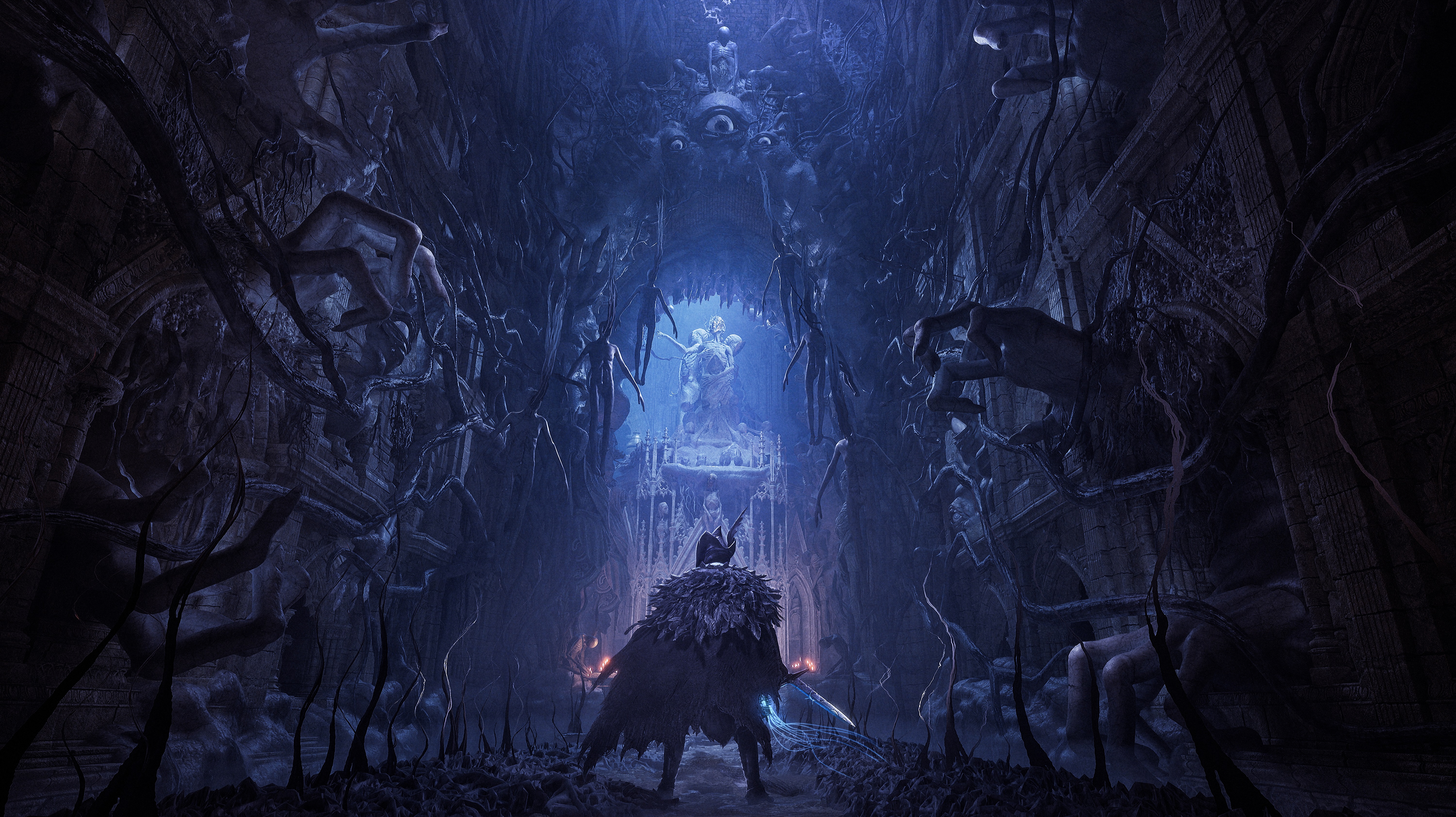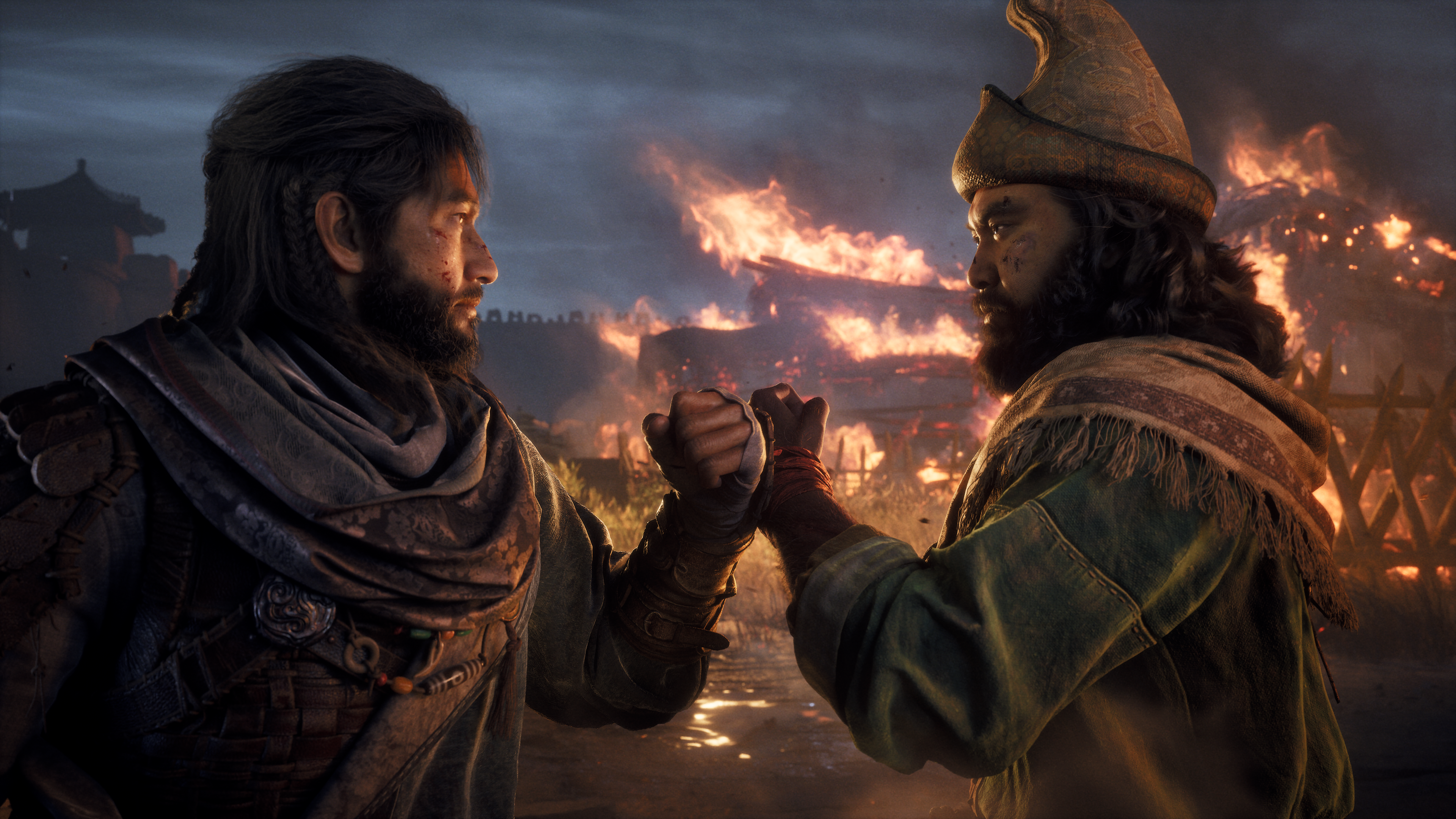
A window to another world.
A lot of studios have tried to jury-rig their own-brand Dark Souls. I’m happy to report that, after four hours with Lords of the Fallen‘s 2023 reboot, Hexwork’s new take doesn’t try to reinvent the wheel. Instead, its devs are building a custom ride using a tried-and-true frame, with a big hunk of weird Umbral nitrous strapped to its engine.
Lords of the Fallen has a troubled past. Its namesake, a 2014 attempt at the soulslike genre, was viewed by some gamers to be a hollow imitation of the real thing—one of the first outsiders to take a stab at cashing in on the surprise successes of Demon Souls and Dark Souls.
The twin ghosts of double-A jank and accusations of being a “rip-off” have loomed over its release to this day, and I imagine my response to news of a remake was the same as many others—”Huh, really? Lords of the Fallen? Okay, but why not start fresh with a new IP?” But the folks at CI Games and Hexworks know their own history, and after spending some time with Lords of the Fallen, I think they’re far from doomed to repeat it.
“[Lords of the Fallen 2014’s] world was very linear, very horizontal, you had no underlying features, you had no accessibility, so you were just dropped in it, period,” explained Colin Gilzean of publisher CI Games, before promising the remake was a step into a new modernised era.
I wasn’t surprised by this self-awareness—it’d be strange if they didn’t talk about it. What blindsided me during my playthrough was just how much they clearly meant it. When I hear phrases like “two lives, two worlds”, the cynical goblin in my brain wakes up, ready to cry gimmick. But I’ll be damned—I think they’ve gone ahead and pulled it off.
Lords of the Fallen has two versions of its game world: Axiom, the land of the living, and Umbral, the land of the dead. If you die in Axiom, you go to Umbral, if you die in Umbral, you die for good. Umbral isn’t just Axiom with a blue filter, though—it’s an alien realm with its own mechanics and personality.
Under my umbral-ella
Lantern, show me: bone bridge! (Image credit: Hexworks / CI Games)
You can open a window to the Umbral whenever you want by lifting up your lantern. You can then choose to step through, bamfing to the Umbral, or you can simply keep it held to interact with its geography in a limited capacity. For example, if a gate’s broken in the Umbral, you can keep your lantern held and mosey on through while remaining in Axiom.
While exploring Mournstead, I saw a platform past a gap too wide to jump. Then I lifted the lantern, revealing a bridge of bone and flesh in the Umbral. “Surely this won’t work,” I said to myself, keeping the lantern pointed straight at the ground as I shuffled across. When I put the lantern away, I dropped down onto the platform back in Axiom, with the giddy smile usually exclusive to speedrunners discovering new tech.
The four hours I played were filled with explorative nuggets like this—the Umbral isn’t just a second life, it’s an alternate reality that you’re constantly engaging with. It feels completely interwoven—but according to Cezar Virtosu, who I spoke with after the preview, things weren’t this seamless until halfway through development.
“From the get-go, we had the lamp as the catalyst to interact with the Umbral world. However, the concept of raising said lamp to look into the parallel realm came halfway through development, when our talented designers did a small prototype on their own time. The moment we saw that lamp raising and inundating the screen with Umbral hellscape, the penny dropped. It was the missing link.”
I concur—Mournstead wouldn’t be half as compelling to explore if I didn’t feel constantly drawn between two mirror dimensions. The Umbral isn’t just a nifty exploration mechanic, though—it’s an alien ecosystem with its own antibodies, and it hates you.
Holding your breath
We’re not in Kansas anymore. (Image credit: Hexworks / CI Games)
The Umbral’s teeth are far sharper than Axiom’s—enemy placement is harsh, and the game populates it with dozens of husks. These things follow slow-moving zombie rules: In isolation they’re nearly harmless, but when there’s five or six of them shambling towards you in an enclosed space, with a deadlier enemy taking swings at you? That’s exactly when they’ll get you.
The Umbral also has an “awareness” metre in the form of a creepy little eye. The longer you spend there, the deadlier its enemies get—eventually summoning an “apex predator” to ambush you. This changed my priorities, encouraging me to make a mad dash to Axiom, forcing me to weigh which fights I needed to finish and which I could dodge-roll past.
Virtosu explained the team’s design philosophy when it came to crafting this sense of lingering dread: “The player—whilst being an Umbral revenant so to speak—is still a trespasser, with their life-essence awakening slumbering horrors. [The Umbral] needed to be a place of fear, a place you can exist momentarily, like holding your breath underwater.”
Axiom plays like a very competent soulslike, but the Umbral plays like something else entirely. If I was forced to do an entirely Umbral playthrough, I think I’d pull my hair out—it’s cruel, capricious, and innately hostile. I felt like a virus in the bloodstream of some lovecraftian god, only ever existing on borrowed time while its white blood cells sought me out.
Having to dip into the Umbral however—holding your breath underwater, as Virtosu put it—made the back-and-forth between the familiar and the alien stupidly compelling. It pairs with Axiom like a fine wine.
Bread and butter
Shall we dance? (Image credit: Hexworks / CI Games)
The Umbral adds an entirely new dimension to a formula we’ve all grown comfortable with—but getting that formula right was still important to Hexworks, and I’m pleased to say they’re doing nifty stuff there, too.
Movement-wise, you can still build the fat-rolling giant dad of your dreams, but the default pace is nice and quick. I was able to game invincibility frames with a backstep, or get out of dodge with a full roll—and when I started sprinting, my lantern-bearer hauled ass.
That’s another lesson learned from the past for Hexworks, as Virtosu told me: “The overwhelming amount of feedback that the first game received vis-à-vis locomotion and combat in general… While we still offer the fantasy of the slow indomitable tank with tremendously impactful weapons, for the light and medium levels of encumbrance, movement and evasion are much more responsive.”
One of two bosses I fought—Pieta, She of Blessed Renewal—felt like a proper guide to the games’ focus on timed blocks, ranged attacks, and posture-breaking. I had a back-and-forth dance with her that echoed some of my favourite brawls in FromSoftware’s rogues gallery—Artorias, Genichiro, Hoarah Loux—albeit with a bigger focus on movement and positioning, like seeing an old friend with a new haircut.
This feeling continued into the rest of my preview time. The second boss, a horrible mass of writhing limbs at the bottom of a swamp, felt bog standard—until I realised I needed to lift up my lantern to hoover up an Umbral parasite with my lantern like a ghostbuster. Or, after dying and going to the Umbral proper, I could just run up and hit it. It’s all very familiar, but with enough newness to rekindle that old flame.
Part-time ghostbuster. (Image credit: Hexworks / CI Games)
Looking forward
Lords of the Fallen has a history, sure—but what I saw in those four hours wasn’t some cynical cash-grab designed to ride the coattails of a gaming giant. Instead I was treated to a confident spin on a set of old mechanics, self-assured enough to mix things up while wearing its inspirations on its sleeve.
Second chances are rare in gaming—beloved MMOs are shut down, studios are shuttered, and some games are even killed before they get a chance to hit our hard drives. But Hexworks isn’t running from the past, as Virtosu wrote to me: “There are nine million unique users that played the 2014 title, so we wanted to do good by them. We are very respectful of the source material, and we have absorbed it in its entirety.”
“The feedback received on the combat, RPG elements, spells and biome diversity—we wanted to address it all first and foremost. Our own ambitions and desires took second and third place.” Ultimately, Lords of the Fallen is an attempt to do better, and from the short time I’ve spent with it, I think Hexworks has a good chance of delivering.




